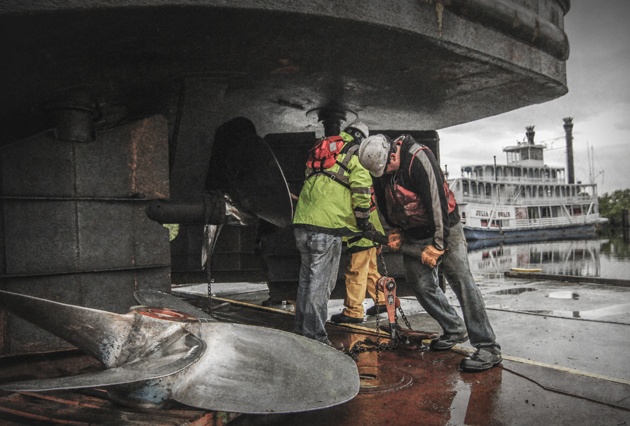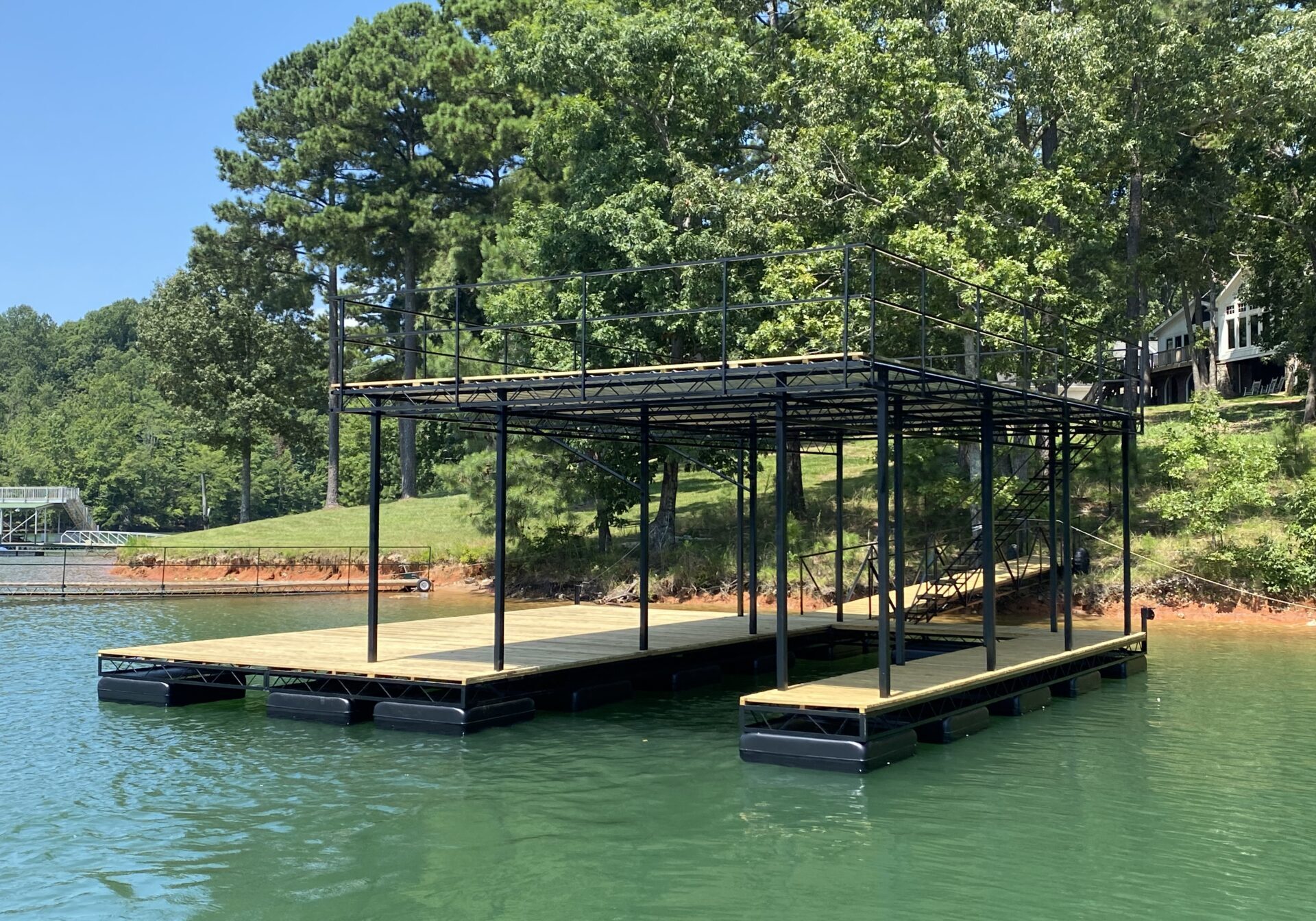Specialist Insights on Long-Lasting Dock Repairs Solutions
Specialist Insights on Long-Lasting Dock Repairs Solutions
Blog Article
Effective Dock Repair Techniques: Ensuring Structural Integrity
Making certain the structural integrity of docks via efficient repair techniques is critical for the long life and security of aquatic centers. Ultimately, picking the ideal repair materials, such as composite materials and corrosion-resistant alloys, is important for longevity.
Analyzing Dock Damages
Assessing dock damages is an important initial step in ensuring the architectural honesty and safety and security of any type of docking facility. This first assessment involves a detailed examination to determine both concealed and noticeable problems. Trick elements to take a look at consist of the dock's foundation, pilings, decking, and hardware. Each element should be looked at for signs of wear, rot, deterioration, or other types of degradation that might compromise the structural honesty.
Architectural designers or certified assessors usually carry out these evaluations using specialized tools and techniques. Undersea assessments might employ finder tools or from another location ran automobiles (ROVs) to find submerged damage. Over water, aesthetic assessments are matched by using dampness meters and various other diagnostic tools to reveal underlying problems not instantly noticeable to the nude eye.

Choosing Fixing Materials
Choosing the proper fixing products is a pivotal action in the dock repair procedure, one that straight affects the longevity and efficiency of the fixed framework. Product choice have to be driven by variables such as environmental conditions, load-bearing requirements, and compatibility with existing dock elements. Timber is a standard selection for anchors due to its all-natural durability and visual allure. Selecting the appropriate type of wood, such as pressure-treated lumber or normally rot-resistant types like cedar or teak, is essential to stand up to marine environments.
In addition to timber, composite products are significantly preferred as a result of their toughness and low upkeep demands. Composites, generally made from a blend of plastic and timber fibers, provide outstanding resistance to rot, insects, and UV damages. For metal anchors, selecting corrosion-resistant alloys such as galvanized steel or marine-grade aluminum is important to stop rust and make certain structural honesty in saline water conditions.
Epoxy materials and marine-grade sealants are crucial for repairing fractures and securing joints, providing a water resistant obstacle and improving the dock's overall stamina. By thoroughly picking top quality materials, dock fixings can achieve resilient outcomes, thereby protecting against future destruction and ensuring safe, reputable usage.
Architectural Support Techniques
Effective architectural support techniques are vital in making sure the security and long life of dock fixings. One basic approach entails using steel or composite reinforcement bars (rebar) within concrete structures. Rebar provides additional tensile stamina, stopping fractures and distributing tons much more uniformly. This technique is especially efficient for anchors subjected to hefty tons or extreme ecological problems.
One more crucial technique is the application of fiber-reinforced polymers (FRP) These materials provide high strength-to-weight proportions and excellent resistance to deterioration, making them excellent for enhancing concrete or wooden anchors. FRP can be applied in sheets or strips and bound with epoxy resins to enhance structural integrity.
Supporting and securing systems likewise play a crucial role in structural reinforcement. Cross-bracing, using metal or wooden beams, can neutralize side forces, decreasing guiding and motion. Anchoring systems, such as helical piers or driven stacks, provide a secure foundation by moving lots to deeper, more stable dirt layers.
Finally, the assimilation of load-distribution plates can aid disperse weight more uniformly throughout the dock's surface area, alleviating localized stress and anxiety factors. These methods jointly make certain that anchors stay robust and risk-free, with the ability of standing up to the rigors of their operational atmosphere.
Advanced Repair Work Techniques

One more sophisticated method includes underwater welding, which permits repair work to be carried out without the need to dewater the area. This method is particularly advantageous for resolving architectural concerns in immersed dock elements, making sure marginal disturbance to operations. Enhanced welding techniques, coupled with robot systems, supply accuracy and dependability, consequently prolonging the lifespan of the dock.
Additionally, cathodic defense systems are applied to prevent deterioration in metal dock structures. By utilizing sacrificial anodes or impressed existing systems, these methods successfully reduce the electrochemical processes that bring about product wear and tear.
Lastly, progressed monitoring innovations, such as architectural health and wellness tracking (SHM) systems, give real-time information on the condition of dock frameworks. These systems allow proactive upkeep and prompt treatments, inevitably guaranteeing the lasting architectural honesty of the dock.
Upkeep and Avoidance
Upkeep and prevention are fundamental concepts that underpin the durability and safety of dock structures. Regular assessments are vital, allowing for early detection of damage, prospective weak points, and ecological influences. A proactive approach, entailing regular checks for rust, rot, and architectural changes, alleviates pricey fixings and extends the dock's operational life.
Safety nets should consist of using safety coverings to steel components to guard versus rust and using cured wood to resist degeneration. In addition, making certain appropriate drainage and air flow can prevent water build-up, which is a typical reason for structural deterioration. Incorporating high quality products and sticking to producer guidelines throughout Resources building and construction and repair work stages additionally play important functions in improving durability.

Training employees in dock maintenance best methods makes sure constant application of safety nets. Leveraging technological advances, such as drones for inspections and sensing units for real-time surveillance, can additionally enhance upkeep efforts. By prioritizing upkeep and prevention, dock proprietors can make sure structural integrity, functional safety and security, and economical administration over the dock's lifespan.
Verdict
In final thought, preserving the architectural integrity of marine centers requires comprehensive dock repair techniques. Complete inspections utilizing advanced devices discover both noticeable and hid damages, while the choice of ideal repair products boosts sturdiness. Implementing architectural reinforcement approaches addresses tension points effectively. Advanced repair work methods, coupled with regular maintenance techniques, make certain the dock stays secure and functional under varied ecological problems. Embracing these strategies considerably extends the life-span and performance of marine facilities.
Making certain the structural honesty of anchors through reliable fixing strategies is critical for the durability and safety of marine centers.Picking the suitable repair work products is an essential step in the dock reconstruction procedure, one that directly influences the durability and efficiency of the fixed structure.Efficient structural support techniques are crucial in making certain the stability more tips here and longevity of dock repair services. By focusing on upkeep and prevention, dock owners can guarantee structural honesty, functional security, and affordable management over the dock's lifespan.
In verdict, preserving the architectural integrity of aquatic facilities necessitates thorough dock repair strategies.
Report this page